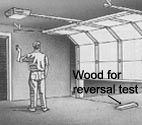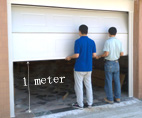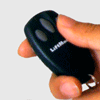The new UL 325 standard is a safety standard for door, drapery, gate, louver, and window operators and systems. Specifically, it applies to electric operators for doors, draperies, gates, louvers, windows and other opening and closing appliances rated 600 volts or less. Consumer Product Safety Commission of USA required that all garage door and gate operators comply with UL325 before wall controls or remotes could be installed. DIN EN 12453 is the European standard that specifies the performance requirements in regard of the safety in use for any type of power operated doors, gates and barriers intended for installation in areas in the reach of persons, and for which the main intended uses are giving safe access for goods and vehicles accompanied or driven by persons in Commercial, commercial or residential premises. Code of practice issue by Electrical and Mechanical Services Department of Hong Kong SAR regulates electrically operated doors and gates installed in Hong Kong.
PNAP 146 issued by BD for
large metal gates. We follow these standard when we design, test or install door and gate. We recommend the following 3 safety tests to be performed periodically by our customers to ensure safe operation of the garage door, after all, it is the largest moving part in your property.
1. Reversal test Put a piece of wood on the floor. Push the transmitter or wall button to close the door. The door must reverse when it strikes the obstruction. Service is needed if reversal test failed. Click here to see test in action |  | 2. Force setting test Test the force setting of your garage door opener by holding the bottom of the door as it closes. If the door does not reverse readily, the force setting may be excessive and need adjusting. |  | 3. Door balance test (2-men job) Use the release mechanism so you can operate the door by hand. You should be able to lift the door smoothly and with little resistance. It should stay open around 1 meter above the floor. If it does not, it needs adjustment. |  |
| |







